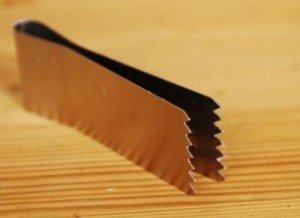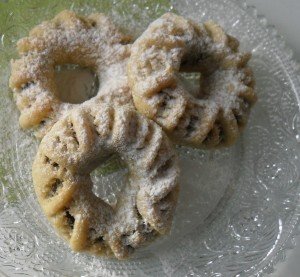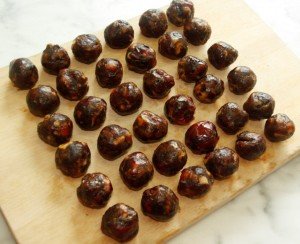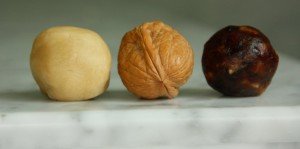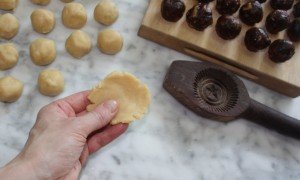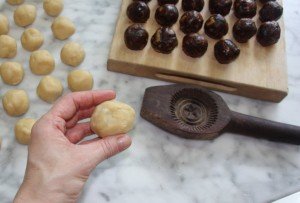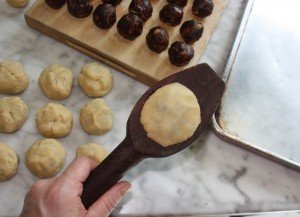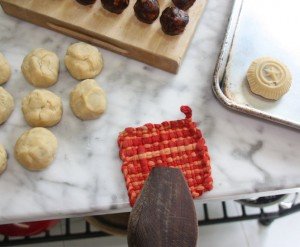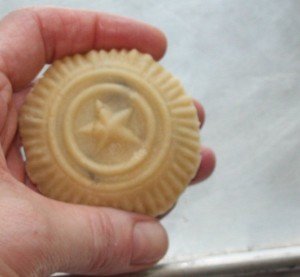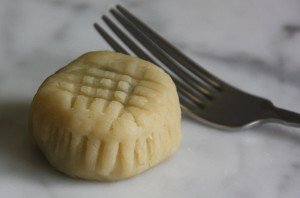Ma’amoul ~ Date-filled Eid Pastries
Ma’amoul are delicate little stuffed pastries that are served all over the Arab world for Eid and Easter. They have several fillings—dates, walnuts or pistachios—and they come in a variety of shapes. Sometimes they are made with semolina, sometimes flour.
I use a special wooden mold to shape my ma’amoul. Round, shallow molds are for dates, while oval and deeper molds are for nuts. If you don’t have a mold, you can shape the ma’amoul in your hand with the tines of a fork.
Meanwhile, many Arab women use little decorative pinchers to create intricate designs in their ma’amoul.
These pastries are all about the dates. Use the best quality dates you can get. I use these large dark-colored dates from the Gulf.
Below is our family recipe that I have made for Eid-al-fitr and Eid-al-adha for the past 15 years.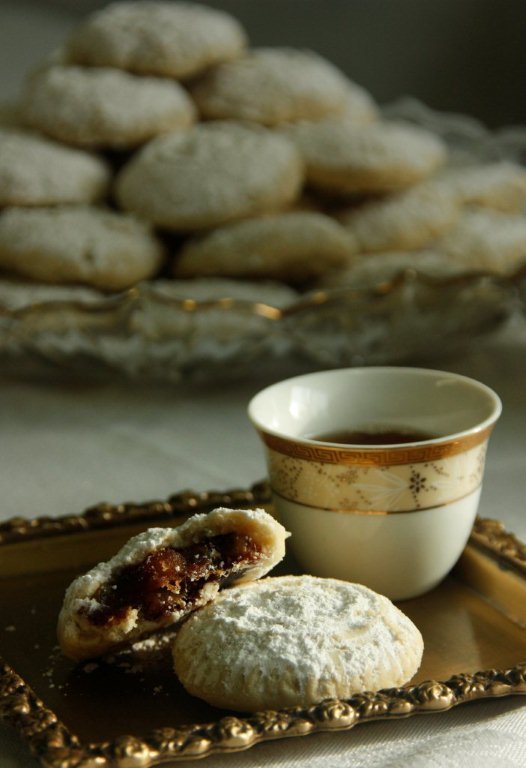
Ma’amoul
Makes about 36 pastries
1 kg (2 lbs.) high-quality dates (or less)
2½ c flour
½ lb. (two sticks or 227 g) unsalted butter
1 Tablespoon rose water
4 Tablespoons milk
Sifted confectioner’s sugar for dusting the pastries
Method
1. Remove pits from dates. Take a walnut-sized amount of dates and roll into a ball. When forming each ball, double check there are no pits. All of this handling should make the dates malleable and easy to shape. If the dates are sticking to your hands, rub your hands with a little butter. If your dates are dry and stiff, coarsely chop the 1 kg of pitted dates and put them in a saucepan with ½ cup water. Stir over medium heat for a few minutes until the dates soften. Roll the dates into 36 walnut-sized balls. (There may be leftover dates.)
2. To prepare the dough, begin by sifting the flour into a large mixing bowl. Work the butter into the flour with your hands or a pastry blender. Add rose water, followed by milk. Work the dough until it is soft and easy to shape.
3. Divide dough into four equal parts. Roll the dough into 36 balls. (Each quarter should make about nine balls of dough.) The dough balls should be about the same size as the date balls—the size of a small walnut.
4. Fill the dough balls with dates. First, flatten a ball of dough with your thumb and make a hollow. Press a date ball into the hollow. Pinch the dough back over the date filling, making a ball shape. Do this with all 36 balls.
5. Next press the filled dough balls one by one into the ma’amoul mold. To snap the dough out of the mold, tap the tip of the mold against the edge of the counter with a firm quick movement. With the other hand, catch the ma’amoul and place it on an un-greased cookie sheet. Dust some flour inside the mold if it’s sticking. Don’t worry about imperfections. They will be covered up by the confectioner’s sugar.
6. If you do not have a mold, flatten the balls slightly and decorate the sides and tops by using a fork.
7. Bake in a preheated slow oven (350°F, gas mark 3) for 15 to 20 minutes. Baking ma’amoul is a delicate operation and requires attention. The bottom-side of the ma’amoul will be slightly browned, but the tops should appear soft and uncooked. If the pastry tops become brown, they will become hard and their taste will be spoiled. Upon cooling, the pastries will become firm.
8. Cool ma’amoul on a cooling rack. When they are cold, dust confectioner’s sugar over them. They keep for at least a week in a tightly closed tin.
On Eid morning in the Arab world, it’s the custom to go visiting family, neighbors and friends. The host typically offers coffee and date- or nut- filled pastry, served up with some witty conversation. Some people may visit a dozen homes on Eid, stuffing themselves with coffee, sweets and the latest gossip.
If you’d like to try another variation, I also have a recipe for Nut-filled Ma’amoul.
Question: What sweet do you serve on Eid? How do you make your ma’amoul?


